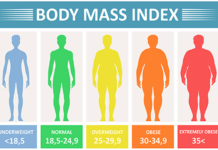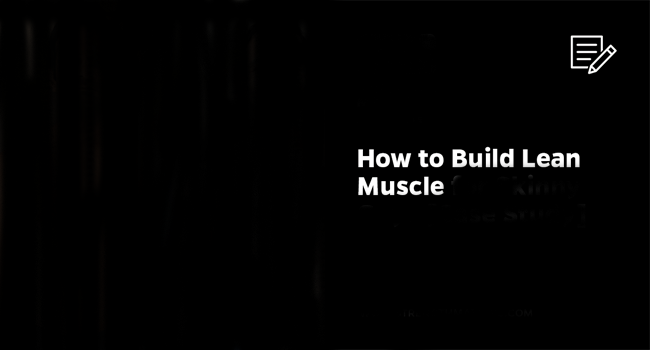Introduction:
Building lean muscle through weightlifting is a multifaceted endeavour that requires dedication, consistency, and the application of effective strategies. While many aspire to obtain a lean, muscular body, information on the concepts and techniques behind weightlifting is crucial for attaining the the most appropriate outcomes. This complete guide goal is to delve into numerous weightlifting techniques tailor-made to totconstructscular tissues efficientMuscle Growth
Before delving into weightlifting techniques, it is critical to comprehend the fundamentals of muscle growth, scientifically called hypertrophy. Muscle hypertrophy occurs while muscle fibres revel in pressure or tension past their regular levels, primary to microscopic harm. Subsequently, the body maintains and reinforces those damaged fibres, resulting in muscle growth. Key elements influencing muscle increase include modern overload, anxiety, metabolic strain, and muscle damage. Effective weightlifting techniques aim to optimize these elements to stimulate muscle increase and promote lean muscle development.
Compound vs. Isolation Exercises:
In weightlifting, sporting events are extensively classified into compound and isolation actions. Compound sports involve a couple of joints and muscle companies, enticing more significant muscles in an unmarried movement. Examples of compound physical games encompass squats, deadlifts, bench presses, and pull-ups. These exercises are essential for correctly building standard power and muscles. Isolation sporting activities, alternatively, goal precise muscle organization and involve movement around a single joint. Examples include bicep curls, tricep extensions, and leg extensions. While isolation exercises can help target particular muscle agencies or address muscular imbalances, they’re usually less effective for ordinary muscle growth than compound moves.
Progressive Overload:
Progressive overload is a fundamental principle in weightlifting critical for exciting muscle booms. It entails progressively growing the demands on the muscle tissue over the years to continue progressing. This may be finished by regularly increasing the weight lifted, the number of repetitions done, or the depth of the exercise. It is implementing revolutionary overload guarantees that muscular tissues are continually challenged, prompting version and increase. However, it is essential to develop steadily and avoid an immoderate increase in weight or intensity to prevent injury and allow for ok recovery.
Repetition Ranges and Sets:
Different repetition ranges elicit various physiological responses and variations in muscular tissues. A moderate repetition variety of 8-12 repetitions in line with the set is often recommended for constructing lean muscular tissues. This variety moves stability between muscle hypertrophy and strength gains. Performing a couple of workout units similarly complements muscle stimulation and growth. Aim for 3-4 sets according to workout, considering sufficient extent while averting overtraining. Rest durations among units can also impact muscle version, with shorter rests (around 60-90 seconds) selling metabolic stress and longer rests (2-3 mins) facilitating healing for heavier lifts.
Tempo and Time Under Tension (TUT):
Controlling the pace of each repetition and maximizing time under anxiety (TUT) can appreciably impact muscle growth. Tempo refers to the velocity at which each section of the movement is finished, including the eccentric (lowering), concentric (lifting), and isometric (pause) levels. A slower tempo, specifically at some point in the eccentric section, will increase muscle tension and induce extra muscle harm, stimulating hypertrophy. Experiment with varying tempos to optimize muscle stimulation and adaptation, such as a 2-1-2 tempo (2 seconds eccentric, one 2d pause, 2 seconds concentric).
Mind-Muscle Connection:
Developing a solid mind-muscle connection is vital for maximizing the effectiveness of weightlifting physical activities. It involves focusing on the centred muscle group and consciously attracting it at some point in each repetition. Individuals can enhance muscle recruitment and activation by building a neurological connection between the mind and the muscular tissues being worked on. Techniques, including visualization, proprioceptive cues, and muscle isolation, as well as physical games, can be helpful resources in improving the thoughts-muscle connection. Avoiding distractions and retaining proper form is also essential for optimizing muscle engagement and reducing the risk of damage.
Variation and Periodization:
Incorporating variation and periodization into your schooling regimen is crucial to save you plateaus and stimulate continuous muscle growth. Variation entails periodically changing exercises, rep ranges, tempos, and schooling modalities to keep the muscular tissues challenged and save your model. Periodization involves structuring your schooling program into excellent stages with unique goals and intensities. Standard periodization models encompass linear periodization, where intensity progressively will increase over the years, and undulating periodization, which includes frequent fluctuations in intensity and volume. Individuals can optimize muscle growth, save from overtraining, and preserve long-term development by strategically using various education stimuli and manipulating intensity, extent, and frequency.
Recovery and Nutrition:
Building lean muscle tissue isn’t just about lifting weights; it also calls for ok restoration and proper vitamins. Rest and healing are essential for permitting muscle tissues to restore and grow stronger after severe exercises. Aim for 7-nine hours of first-class sleep in line with night and include relaxation days into your schooling timetable to facilitate recovery. Nutrition plays a pivotal role in assisting muscle boom and restoration. Ensure you eat a balanced weight loss plan wealthy in protein, carbohydrates, and healthful fat to provide the necessary nutrients for muscle recovery and boom. Aim for a protein consumption of one.6-2.2 grams per kilogram of body weight consistent with day to optimize muscle protein synthesis. Additionally, staying hydrated, consuming micronutrients consisting of vitamins and minerals, and incorporating post-exercising nutrition, including protein shakes or meals rich in carbohydrates and protein, can further aid recovery and muscle growth.
Form and Technique:
Maintaining proper form and method is critical not only for maximizing muscle engagement but also for preventing accidents. Poor form now reduces the effectiveness of the exercise and will increase the threat of stress or harm to muscle groups, joints, and connective tissues. Before increasing weight or intensity:
- Ensure you have mastered the right shape for each workout.
- Focus on proper alignment, range of movement, and muscle activation throughout the motion.
- If necessary, seek search guidance from an authorized private instructor or health professional to learn the proper approach and form cues.
Incorporating Functional Movements:
While traditional weightlifting sporting activities are precious for building muscle mass, incorporating practical actions can decorate average athleticism, strength, and muscle coordination. Functional moves mimic lifestyle activities and often concurrently engage multiple muscle agencies, promoting functional electricity and mobility. Examples of practical moves include kettlebell swings, medicinal drug ball throws, farmer’s carries, and war rope sporting events. Integrating these dynamic moves into your education routine can add variety, undertake exclusive muscle groups, and enhance ordinary bodily overall performance.
Conclusion:
Building lean muscle through weightlifting requires complete expertise in practical strategies and standards. People can optimize muscle boom and achieve their favoured body by incorporating compound sporting activities, modern overload, proper shape, pace manipulation, and good recovery and nutrients. Consistency, patience, and willpower are paramount to building lean muscle tissues. Continuously attempt to undertake your muscle tissue, concentrate on your body, and modify your training routine as desired. With the proper technique and mindset, you can obtain excellent effects and liberate your complete capacity in weightlifting and muscle development.






















